CALCULATING YOUR TARGET HEART RATE ZONES AND THE BENEFITS OF ZONE ENDURANCE TRAINING
Hey TILT Fam!
With nicer weather approaching, it is starting to feel like running season! And we all know how much we run at TILT..
I wanted to give you all a little tip on how you can start NOW to feel better as we approach running. This information is good to use for any cardio machine as well, and will translate to your running capacity come warmer weather!
Understanding your target heart rate and incorporating zone-based training into your fitness regimen could be the key to unlocking your true cardiovascular potential and achieving your fitness goals. In this newsletter, we’ll explore how to calculate your target heart rate using the Karvonen equation and delve into the importance of zone-based heart rate training.
Calculating Your Target Heart Rate with the Karvonen Equation:
Determining your target heart rate zone allows you to optimize the effectiveness of your workouts by ensuring that you’re exercising at the right intensity. The Karvonen equation is a widely used method for calculating your target heart rate, taking into account your resting heart rate and age. Here’s how it works:
STEP ONE: Find Your Resting Heart Rate (RHR): Measure your heart rate while at rest, preferably in the morning before getting out of bed. Count the number of beats per minute (bpm) for one full minute. Or, if you use a fitness wearable, you can use the data from that to extrapolate your resting heart rate from its data.
STEP TWO: Calculate Your Heart Rate Reserve (HRR): Subtract your resting heart rate from your maximum heart rate (220 – age). This gives you your heart rate reserve. This method of incorporating your resting heart rate and your age gives you a better idea of your true heart rate zones beyond the traditional 220-age.
STEP THREE: Determine Your Target Heart Rate Zone: Multiply your heart rate reserve by the desired intensity percentage (usually between 50% and 85%), and then add your resting heart rate.
Target Heart Rate = (HRR × Intensity %) + RHR
Now that you have those metrics, you can choose the percentage zones to work in. Typically, we want to work submaximally for almost all training which inturn raises your threshold and thus improves your fitness!
A great starting point is complete interval runs/biking/rowing/etc at the intensity you’re starting at. It’s okay for it to feel easier than you’re used to…that’s the special part!
Importance of Zone-Based Heart Rate Training:
Zone-based training involves exercising within specific heart rate zones, each corresponding to different levels of intensity. By training in different zones, you can target different physiological adaptations and achieve various fitness goals. Here’s a brief overview of the common heart rate zones:
Zone 1: Recovery (50-60% of max HR): Ideal for warm-up, cool-down, and active recovery. Builds aerobic endurance and promotes “fat burning”. This zone will feel SO EASY and you should be able to hold a conversation throughout the entire duration. This zone could be sustained for over 1 hour in theory.
Zone 2: Endurance (60-70% of max HR): Enhances aerobic capacity, improves endurance, and builds a solid fitness foundation. This is the golden standard zone for overall health and longevity. Aim for 40-60 minutes at this zone.
Zone 3: Tempo (70-80% of max HR): Increases lactate threshold, improves speed and stamina, and boosts overall fitness. I highly recommend starting at 70% and increasing no more than 3-5% on your training. 80% is a high point and will feel HARD. You should aim for bouts of 1-3 minutes at this intensity.
Zone 4: Threshold (80-90% of max HR): Enhances anaerobic capacity, improves race performance, and increases overall fitness level. This is super exertional and sustainable for less than :90 for the most fit. I recommend interval training here at :20-:30 on and 90 seconds up to 3 minutes rest.
Zone 5: Maximum (90-100% of max HR): Pushes your limits, improves speed, power, and performance, but should be used sparingly due to high intensity. A true Zone 5 is done in less than :45 seconds. Think Usain Bolt sprinting the 100m. By 50m he is already physiologically slowing down because he has capped out. This zone is HARD.
Incorporating zone-based training into your workouts allows for more targeted and efficient training sessions, helping you achieve specific fitness objectives, whether it’s weight loss, cardiovascular health, or athletic performance improvement.
Understanding your target heart rate and incorporating zone-based training into your workouts can revolutionize your approach to fitness. By training smarter, not just harder, you’ll maximize your efforts and move closer to your fitness goals with every workout.
Until next time, keep moving, keep sweating, and keep striving for greatness!
Dr. Brit – BEFORM PERFORMANCE PHYSICAL THERAPY



